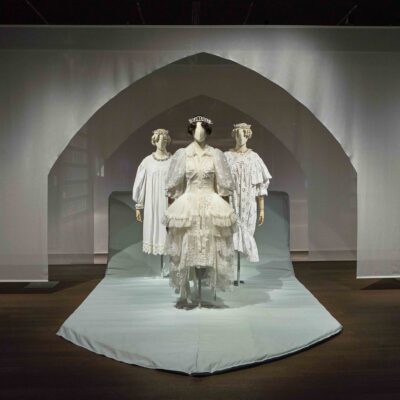
Exhibitions 21.11.2025
05.03.2024
European fashionfashion historyItalian fashionmade in Italytextile history
EFHA took part to the presentation of the book in the headquarters of our partner Centro di Ricerca Gianfranco Ferré in Milan
On February 28, in the beautiful setting of the Centro di Ricerca Gianfranco Ferré’s headquarters in Milan, we took part of the presentation of ‘A New History of Made in Italy’ by Lucia Savi.
As association that unites European museums and institutions that preserve fashion heritage and, through fashion heritage, problematize the storytelling of local and global history, the European Fashion Heritage Association actively promotes new, analytical and narrative directions who use the history of fashion to reflect on economic, political and identity issues.
Lucia Savi’s book ‘A New History of Made in Italy’ served as springboard to reflect on the current state of the fashion system and its relationship with heritage.
The presentation was developed in the form of a conversation between Lucia Savi, textile historian and curator Margherita Rosina and journalist and critic Antonio Mancinelli, chaired by EFHA’s Marta Franceschini.
The conversation started with Lucia explaining the reasons that brought her to conduct her doctoral research on Italian textiles and then publish a book from her PhD thesis. Her ‘curatorial’ approach to research and writing comes from her long experience at the Victoria and Albert Museum, where she was assistant curator of The Glamor of Italian Fashion 1945–2014 (2014), Shoes: Pleasure and Pain (2015), and curator of Bags Inside Out, an exhibition which literally went around the world.
Italian and Anglo-Saxon methodologies were discussed with Margherita and Antonio, who reflected on the differences in approach to studying and writing between Italy and the UK, and also in consulting archives. In 2021, Rosina and Mancinelli were both called by the Italian Ministry of Culture to be part of the study commission for the identification of public policies for the protection, conservation, enhancement and enjoyment of Italian fashion as cultural heritage, and their expertise was invaluable during the conversation, as it touched themes as institutional engagement in the fashion system and the consideration of fashion as producer of culture as well as products.
One of the central themes for the ‘new’ definition of made in Italy proposed by Lucia in her book is Italian textile production, which from the research emerges as a great influence in the definition of a particularly Italian fashion identity, between industrial intelligence, entrepreneurship and creativity applied to production and development.
The analysis made by Lucia in the book highlighted the changes happening in the system, and above all analysing the evolution of roles and hierarchies. In particular, Lucia researched extensively the carnettisti, who connected textile manufacturers to couturiers. Their demise coincided with the development of the ready to wear industry and the rise of the stilista, as person working for the manufacturer to define the ‘style’ of the RTW collections.
After discussing how the stilisti worked and how their role changed again to become creative directors or artistic directors – whose ‘curatorial’ approach to the legacy of brands and historical fashion houses characterises the current way of ‘making fashion’, the discussion closed with an open question: what will the future of Made in Italy be like? We do not know for sure, but surely heritage – and digitised heritage, indeed! – will keep playing a part in the delineation of the future developments of Italian fashion identity.
Want to learn more? Get yourself a copy of the book here.